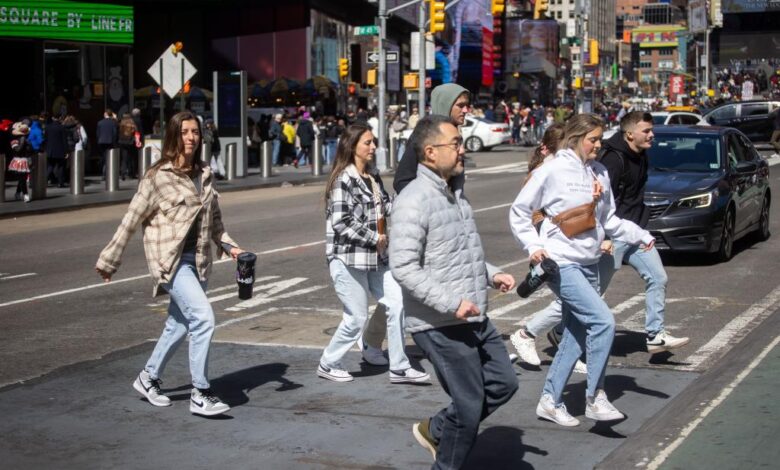It’s the latest handcuff slapped on NYPD cops

New York City streets have become a bit more hazardous with the recent legalization of jaywalking by the City Council. The decision to eliminate the fine for jaywalking was made in a 40-8 vote back in September, which Mayor Eric Adams did not have time to veto, making it officially law by the end of March.
While the decriminalization of jaywalking may not have a significant impact on New Yorkers’ daily lives, it does take away a tool that the NYPD used for addressing safety concerns. The progressive council’s move to eliminate minor enforcement tools like jaywalking summonses is part of a larger trend in reducing pretextual enforcement.
Council members argued that jaywalking summonses were issued in a racially discriminatory manner and that lifting this burden off the NYPD was necessary. However, data shows that only 650 summonses were issued for jaywalking between January 2020 and October 2024, indicating that enforcement was targeted at dangerous intersections.
Deputy Transportation Bureau Chief Thomas Alps testified that jaywalking enforcement was part of a problem-oriented policing approach aimed at reducing pedestrian fatalities and injuries at high-risk locations. Prohibitions on minor offenses like jaywalking play a crucial role in allowing police officers to address risky behavior before it escalates into more serious incidents.
The City Council’s decision to decriminalize jaywalking is part of a broader push to focus on major crimes rather than quality-of-life offenses. While the intention may be to reduce harassment of innocent New Yorkers, the consequences of eliminating pretext tools can lead to larger public nuisance issues.
The legalization of marijuana and decriminalization of loitering for prostitution purposes have already shown how removing prohibitions on anti-social behavior can result in unintended consequences. Without the ability to proactively address issues through minor enforcement, problems are allowed to escalate before any action can be taken.
Jaywalking, a common practice in New York City, poses risks on busy streets, making the threat of monetary consequences an important deterrent. While a significant increase in pedestrian deaths may not be expected, the streets will undoubtedly be less safe without the enforcement of jaywalking laws.
Ultimately, the move to decriminalize jaywalking represents a shift away from proactive problem-solving by law enforcement, which could have far-reaching implications for public safety in the city. It is essential to consider the potential consequences of eliminating minor enforcement tools in addressing larger societal issues.
Charles Fain Lehman, a fellow at the Manhattan Institute and senior editor at City Journal, highlights the importance of maintaining a balance between addressing minor offenses and preventing more significant problems before they arise. The decision to legalize jaywalking reflects a broader trend in reevaluating the role of law enforcement in ensuring public safety.





